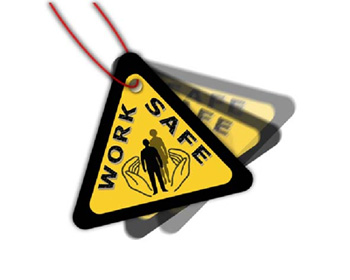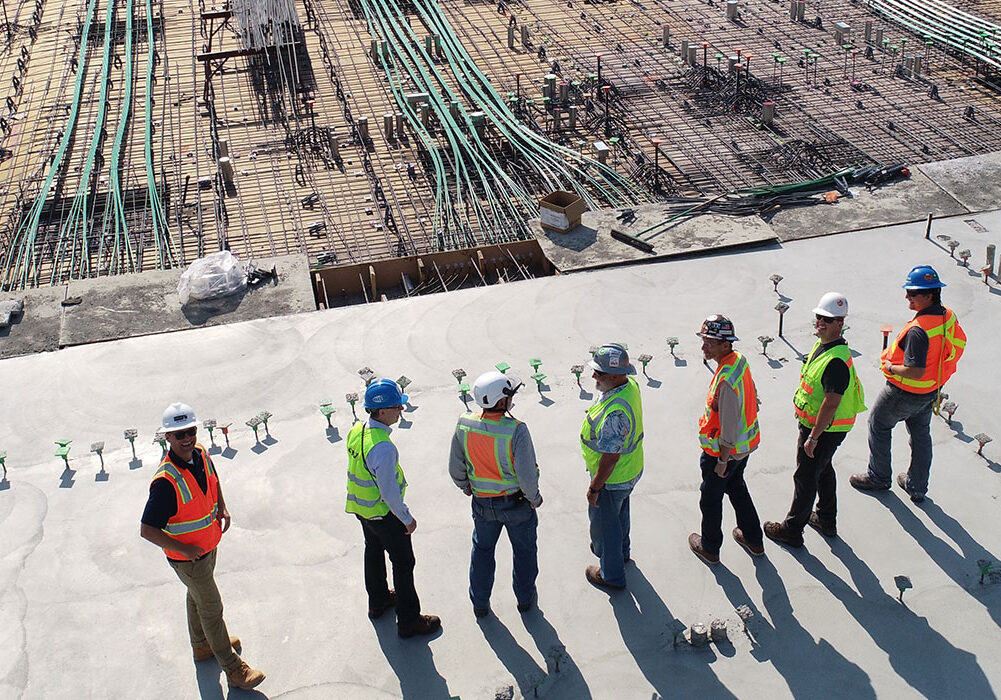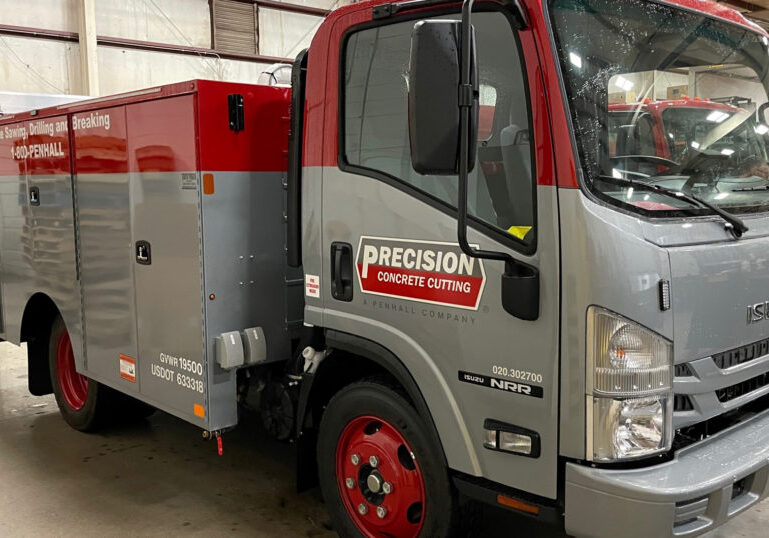By: Tim McElroy
Anyone in a construction-related job knows that it’s one of the most dangerous sectors to work in. All accidents are preventable. By implementing and maintaining the following five strategies, companies protect the safety of employees, customers. and the general public on all construction job sites.
 Thorough job site set-up
Thorough job site set-up
Before any employee even walks onto a the job site, it is imperative that an experienced and knowledgeable project management team takes the time to identify potential hazards. These could influence employee and public safety, and production. For example, by asking contractors to provide a project specific “Hazardous Materials Survey,” employee exposure to hazardous substances (e.g. asbestos, lead-based paint, mercury in exit signs, hydraulic oil in the elevators, PCBs in light ballasts, etc.) can be acknowledged, addressed and abated/removed prior to the workforce arriving on the project.
Clear, layered communication
Clear communication is essential to ensure a “Zero Accident Work” environment. And he pathways for that communication are just as important. For example, at Penhall Company, jobsite information and conditions must be relayed through multiple departments before a job is even staffed.
First, the Division Managers and sales force relay information about the project and any potential hazards to the Penhall Company Dispatchers. The Dispatchers then send a qualified and trained safety professional to the job site. The safety professional conducts a pre-job hazard assessment and evaluates the project for hazards that might impact the crew on the job site.
As needed, additional qualified team members visit the project site to provide their expertise for how to address certain safety issues. Once they gather and consider all the information, they write a “Site Specific Safety Plan.” The Project Management Team Members review and comment on the plan.
The Project Management Team and workforce must always ask themselves these four question prior to starting the project or task:
- What am I about to do?
- Is there anything that can go wrong?
- What have I done to correct the problem?
- What have I done to communicate the problem?
It’s one thing to be aware of the hazardous, but it’s imperative to actually implement corrective action. The team must be aware of those actions so that the hazards don’t cause harm to someone’s health and safety.
Trained work force and competent equipment
Training and safety go hand-in-hand. In addition to being adequately trained for the specific job scheduled, team members must receive training on:
- Communicate effectively about safety with their crew and supervisors;
- Recognize safe and unsafe conditions and behaviors;
- Correct unsafe acts.
Long before ever stepping foot on a job site, team members must complete extensive safety training. This begins with new hire orientation. Safety training should be an on-going process and fostered from the executive team, to the boots on the ground.
Crew members operating specialty equipment, such as flat saws, wall saws, core drills, scissor lifts, are trained on the use and safety aspects of the equipment. Additionally, Penhall management signs off on the ability of each employee prior to allowing them to complete unsupervised activities.
A seasoned work force
Seasoned operators who have years—if not decades— of experience are essential to protecting the health and safety of the people involved in a construction project. Their experience can help them recognize potential hazards that arise on a job. Also, to know how to communicate safety-related issues to supervisors. This also goes back to training. The more training and mentoring team members receive, the more empowered they feel to communicate if they see unsafe situations or behaviors.
Maintaining a positive work environment
As they say, attitude is everything. Regardless of the industry, people like to go to work with people that they know, like, and trust. When site supervisors interact professionally with their team members, that positivity has a good impact. As a result, the entire work environment is more collaborative and cohesive. The workforce feels that their co-workers have their back and are looking out for their safety and well-being.
Remember, at the end of the day, safety is no accident.


